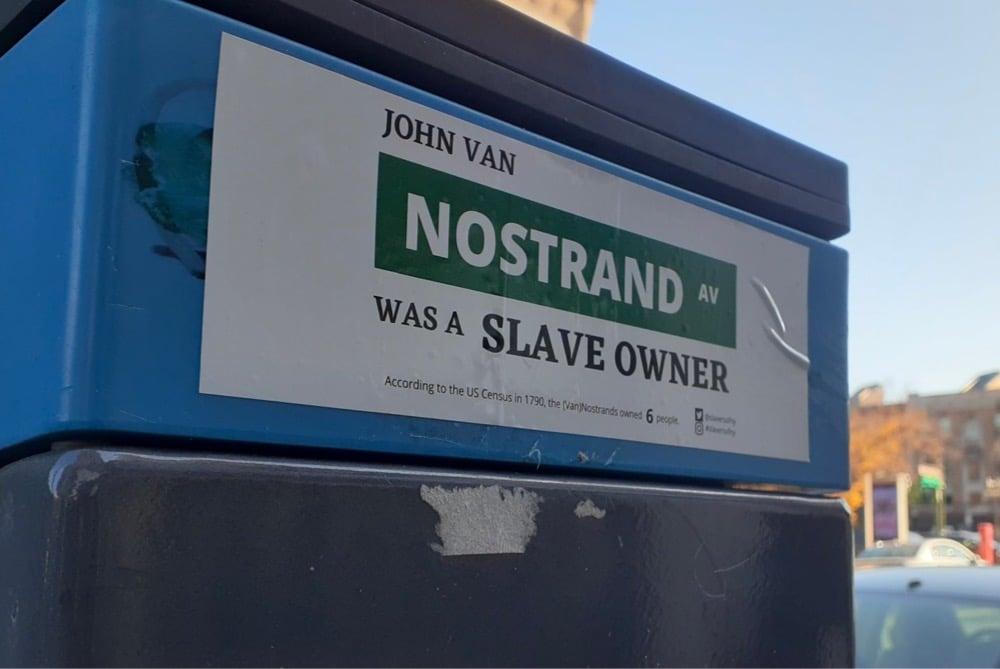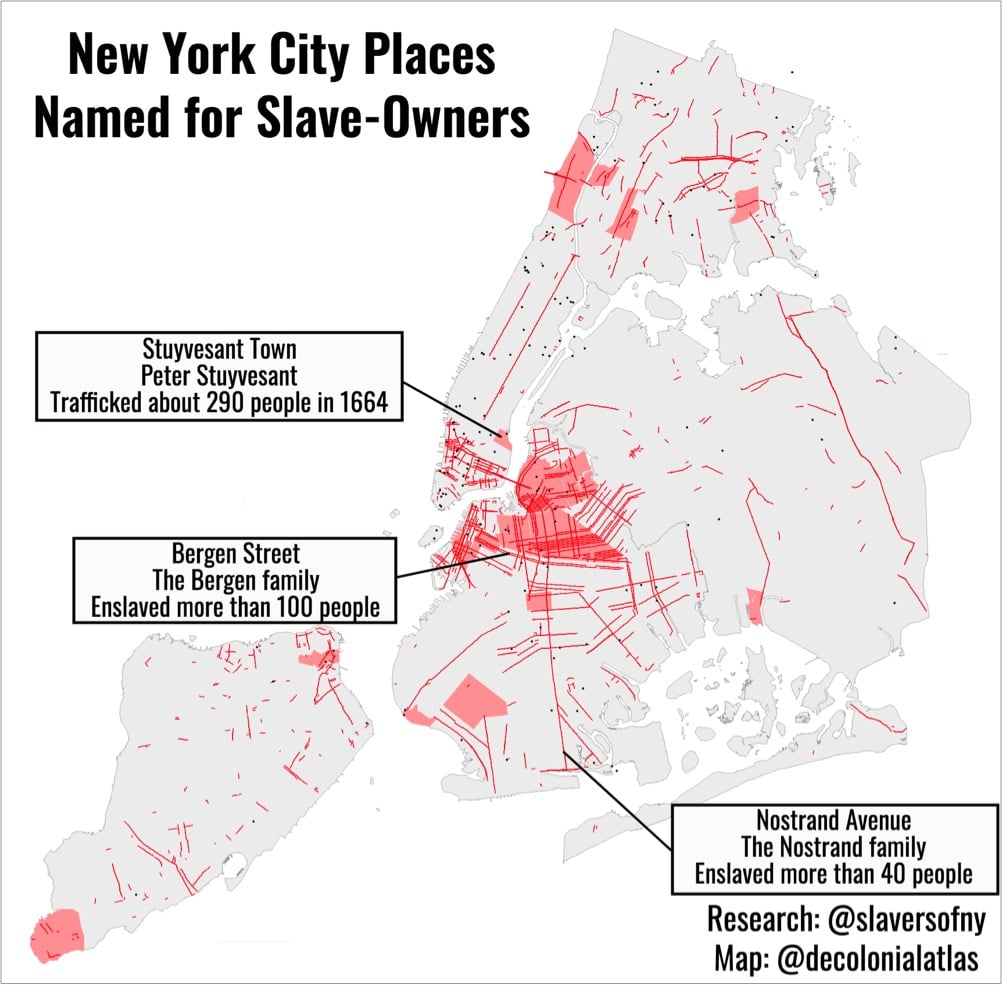Exposing the Slavers of New York


A group of activists called Slavers Of New York is working to educate people about the prominent New Yorkers who lent their names to the city’s geography (Nostrand, Bergen, Rivington, Stuyvesant, Lefferts, Boerum) and were also slave owners or traffickers. From the NY Times:
Just a few months before, while scrolling through social media, Mx. Waithe had stumbled upon records from the nation’s first census in 1790, which listed well-known New York families like the Leffertses, the Boerums and the Nostrands. To the right of those names was another category: “slaves.”
According to the census, the Lefferts family enslaved 87 Black people throughout New York City (Prospect Lefferts Gardens and an avenue in that Brooklyn neighborhood were named after them). The Boerums owned 14 slaves (the neighborhood Boerum Hill is named for them). And the Nostrands (of the eight-mile-long Nostrand Avenue), enslaved 23 people (this number would nearly double by the beginning of the 19th century).
The discovery sparked Slavers of New York, a sticker campaign and education initiative dedicated to calling out — and eventually mapping — the history of slavery in New York City.
The group detailed how they started where the project is headed in an interview in Guernica:
Mainly, our goal is to just educate people about the legacy of slavery and how it persists in the present day. We don’t advocate for changing the names in any way. We hope that, if people feel so inclined to change names, they create their own groups and engage in political action. I definitely think there should be more context available in public places. When Maria and I went to Stuyvesant Square in Manhattan, a statue of Peter Stuyvesant was there in the middle of the park, glorified, and there’s no information about his slave-owning history.
What’s really interesting is that some of the naming of places for slavers happened more recently than you would imagine. Boerum Hill wasn’t called “Boerum Hill” until 1964 or so, when that name was resurrected as part of the gentrification of Brooklyn. You can see, directly, the entanglement of the history of slavery and gentrification. Bringing this man’s name back into the neighborhood is a symbol of violence. The persistence of these names and links carry this space through history.
You can keep up with the group’s efforts on Twitter and Instagram and support their mission on GoFundMe. (Map above courtesy of The Decolonial Atlas.)





Stay Connected